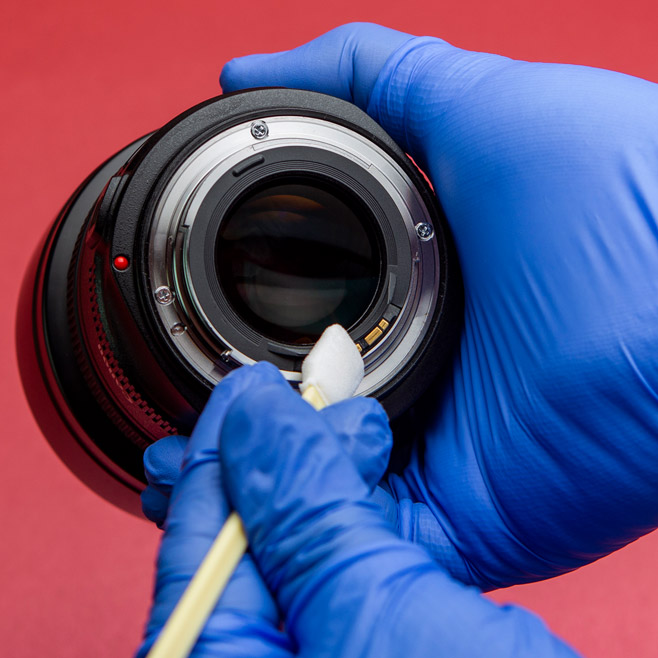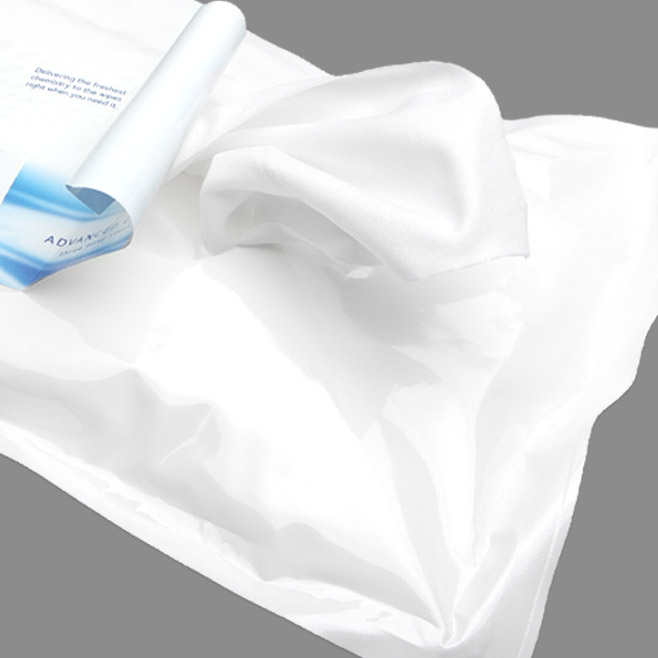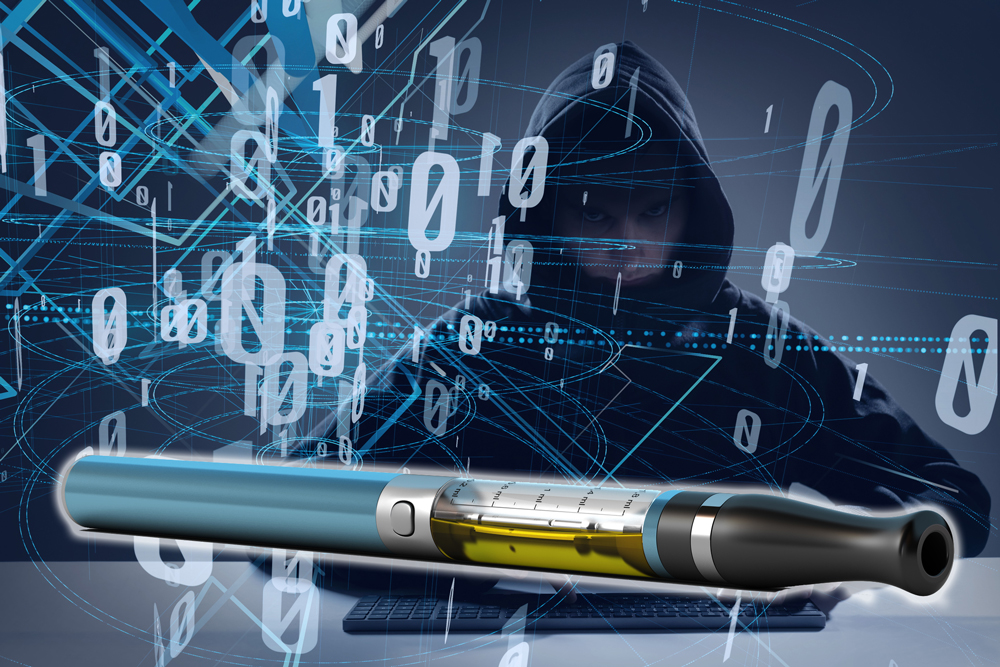Cleanroom News, Contamination Control
How the ‘Hidden’ Internet May Be Causing Injury and Death
Habits can be hard to break. That impulse purchase that breaks our budget, that extra slice of pizza despite our diets, that glass of wine to relax on a Friday evening. Whatever the form of our own personal kryptonite, habitual behaviors are a sort of neural wiring and as such ingrained and a real challenge to change. And even when they are detrimental to our health, we often do not change these habits because, as neuroscientist Tali Sharot explained in her TEDx talk ‘How to motivate yourself to change your behavior,’ changing is a present moment action weighed against a future hypothetical.(1) But to what degree will we strive to keep our head buried in the sand? How far will we go to not change our behaviors even in the face of a threat to our very survival? Let’s take as an example the sudden controversy around e-cigarettes and the habit of vaping…
Largely considered to be safer than traditional smoking (no second-hand smoke and equally no tar or carbon monoxide – two of the most harmful components of conventional cigarettes), vaping is the practice of using a hand-held vaporizer and e-liquids to deliver nicotine vapors directly into the user’s mouth and lungs.
It has grown in popularity in recent years much as cigarette smoking has fallen into the social shadows. However, with a handful of deaths from vaping in the news, several states have banned vape products in the interest of the public health. But are the bans justified? Given that vape cartridges are broadly legal in most states, will prohibition work in those that seek to implement it? And can we really eliminate a potential health risk simply by making the associated behaviors illegal? To examine these questions, we looked back in history to a time when another substance was outlawed ostensibly for the sake of public health: alcohol.
Between 1920 and 1933, drinkers from the vineyards of California to the beer breweries of Massachusetts were faced with a conundrum. In the closing days of the Woodrow Wilson administration, the Eighteenth Amendment to the Constitution was passed prohibiting ‘intoxicating liquors.’ Enforced by the Volstead Act, intoxicating liquors came to include not only hard liquor but also wine and beer. The impetus for prohibition came from two directions: by outlawing the production of alcohol, more resources could be devoted to the aftermath of the first World War; and also, by eliminating alcohol, the economy would improve thanks to an increase in public health and productivity and a decrease in crime.
So when the nation became abstinent did the projected benefits materialize? Although it is possible that crime rates did fall, the results in terms of public health remain in contention. On the one hand, historian Jack S. Blocker, Jr. cited research indicating a decline in cirrhosis of the liver, alcoholic psychosis, and arrests for public intoxication. But on the other hand, continued public demand for alcohol created a space in which bootleggers such as George Cassiday – also known as ‘the man in the green hat’ – created a thriving underground economy to supply parched patrons. And without governmental regulation and oversight, bootleg products were not always safe. Not only could a consumer waste hard-earned money on substandard beer, but could find their beverage laced with a handful of poisons. How so? Sterno – those little cans that keep chafing dishes warm at buffets – is a product made from denatured and jellied alcohol. By passing it through a piece of cloth, a liquor-type liquid could be obtained as a substitute for alcohol. We don’t know how it tasted but the results of drinking it were dire: although not fatal, Sterno liquor was sufficiently poisonous for consumers to seek reparations when Prohibition came to an end. Moreover, the US government of the time ordered manufacturers of substances such as ethyl alcohol to add toxins to their product to prevent its use in crafting illicit beverages. Of course this did not reduce consumption but led to an estimated 10,000 deaths from drinking denatured alcohol before Prohibition ended in 1933. (Read our article about ethyl alcohol used in cleanroom cleaning.)
This history of governmental attempts to control public habits is relevant now as it demonstrates that changing public habits – especially ones that are based in addiction – is a process that cannot be forced by a heavy-handed approach. The recent deaths attributed to vaping and e-cigarette products have led some states – Massachusetts, New York, Michigan among them – to enact bans on vape products. However, as we saw from the 1920s, capitalism – like nature – abhors a vacuum and where a demand exists, a supplier will inevitably step forward. And unfortunately when driven underground such suppliers form wide-spread networks that are funded and armed as criminal cartels, and their wares are not always what they seem. Especially in the era of the internet.
Where now romanticized bootleggers of the 1920s enhanced their automobiles to protect their moonshine from confiscation and themselves from jailtime, today’s vendors of banned vape products leverage the broader technology of the so-called Dark Web.
What do we mean by this? In the hacker lexicon, the Dark Web refers to a subset of websites whose IP addresses are hidden using anonymity tools like Tor and I2P. Although much is made of the ‘vast, secret, cyber underworld,’ the Dark Web – as an article in Wired notes – is neither that large nor that secret.(2) It is simply a set of sites that use masking technologies such as Tor to add layers of encryption to web traffic and pass it randomly through multiple servers. Each server hop results in the peeling away of one layer of encryption until the data reaches its final destination. And because of the relative anonymity, it has become a bazaar of darknet markets – virtual vendors of armaments, software exploits, cryptocurrencies such as Bitcoin, blockchain technologies, and banned substances. One dark web market, Alphabay, commonly lists for sale e-liquids containing everything from cocaine to morphine, ecstasy to temazepam.
But it is the counterfeiting services available on the Dark Web that are perhaps most relevant to our discussion of toxic vaping products.
Illicit, black market counterfeits are potentially deadly as they may under-report the dosages of active ingredients or, conversely, omit them altogether. By the same token, as we have seen from the explosion of news stories concerning fentanyl – an opioid 25 to 40 times stronger than heroin – additional substances may also be present in counterfeit drugs. The desired ingredient may be cut with inactive fillers such as flour, talc, chalk, gypsum, or acetaminophen which risks interactions with other prescribed drugs. What’s more, unless they have access to a laboratory users cannot know what exactly is in their vape cartridges if bought from one of these anonymous sources. According to a review in the New Scientist, mass spectrometry represents the most effective method of analysis of vape products, a technique used by Dr. Michelle Peace at Virginia Commonwealth University to uncover the presence of vitamins, caffeine, heroin, and methamphetamine, along with synthetic cannabinoids, in products labelled as plain old nicotine.(3)
So if the vast majority of vapers who buy products from – shall we say, ‘less then reputable’ – sources can’t tell what exactly they are inhaling, is it worth the risk? As with many addictions, it all depends on your own personal neural wiring. If you don’t vape, it may be hard to understand why someone would take the chance but people are fallible and sometimes they pay with their lives.
As of October 8, 2019, 1299 cases of lung injury from the use of e-cigarettes and vaping products have been reported to the CDC, 29 of which have tragically proven fatal.(4) According to the CDC’s data, the victims reported using vape cartridges containing either nicotine and/or tetrahydrocannabinol (THC) and cannabinoid (CBD) oils. However, the advertised contents of the cartridges is where the commonality between the cases ends. Victims have belonged to a range of age groups – from 13 to 75 – with 70% being male, but the toxic products have mimicked multiple brands. According to an analysis in the New York Times, ‘[f]ederal and state health authorities are testing vaping materials and studying tissue samples from patients in an effort to find the cause of the outbreak. They are particularly concerned about the huge amount of illicit THC products in circulation, which contain unknown mixtures of solvents, diluting agents and flavorings that may be toxic to the lungs.’(5)
And given that many consumers vape without incident, it looks likely that it is these ‘unknown’ chemicals that may be to blame. In findings published in the New England Journal of Medicine, biopsies of lung tissue taken from those affected by the lung injuries show ‘a pattern of injury in the lung that looks like a toxic chemical exposure, a toxic chemical fume exposure, or a chemical burn injury.’ In fact, Dr. Brandon T. Larsen of the Mayo Clinic in Scottsdale, AZ, went as far as saying that the injuries ‘also look like those seen in people exposed to poisons like mustard gas, a chemical weapon used in World War I.’(6)
Chemical burns and mustard gas? This seems a long way from the ways in which vape products are marketed by domestic manufacturers. And perhaps that is due to the fact that companies such as Juul, one of the most well recognized players in the vape market, remain transparent about not only their product but also their processes. And in terms of cleanroom technology and contamination control, this is where we find the company extremely interesting. Juul’s product standards focus on three main areas: ingredient standards, vapor testing standards, and device standards. Using Occupational Health and Safety Administration (OSHA) guidelines, Juul prohibits the use of chemicals that appear either on the FDA’s list of Harmful and Potentially Harmful Constituents (HPHCs) or the European Chemical Agency Classification of substances believed to be carcinogens, mutagens or to have reprotoxic properties. According to the company’s website, e-liquids are made of propylene glycol and glycerine in a 30/90 mix, benzoic acid, USP grade nicotine, and natural and artificial flavorings.(7)
In respect of the vapor testing standards, temperature regulation is important to ensure that harmful chemicals are not created during combustion, and toxicology tests are performed not only on the e-liquids but also on the vapors. And of course there’s the question of the hardware: Juul claims that their vape pens are tested not only for reliability but also for battery safety, electromagnetic compatibility, and for levels of emitted radiation.(8)
All of which sounds good but what is the process for testing in this way? In order to create a product that differentiates itself from competitors, a legitimate e-liquid should be manufactured in a cleanroom environment.
The American E-Liquid Manufacturing Standards (AEMSA) is the benchmark for e-liquid safety and emphasizes accuracy of nicotine content, manufacture of products within a clean, aseptic environment, correct product packaging, and transparency of all monitoring and verification standards.(9) Existing alongside the United States Pharmacopeia (USP) and the International Standards Organization (ISO), it creates a strong framework for manufacturing control, including specifications for cleanroom standards. For the production of e-liquids, cleanrooms range between ISO 6 and ISO 8 with most e-liquid manufacturers opting for an ISO 7 facility. As described by the Production Automation Corporation, an ISO 7 cleanroom is a ‘pharmaceutical-grade environment suitable for processing, packaging, and compounding medical-grade products in a positive pressure environment. While these environments are not sterile, they support aseptic workflow, a specific workflow that minimizes the retention of particulates and opportunistic microbes.’(10) The most common contaminants in e-liquid manufacture include hydrocarbons, aldehydes, acetone, diethylene glycol, ethylene glycol, and ethanol. Equally, ‘[p]ost-processing, packaging, labeling, or inspection are feasible in less constricted areas with less intensive air requirements, usually ISO 8’ which would allow for 3,520,000 particles smaller than or equal to 0.5µm/meter3. In this post-processing phase, a modular cleanroom facility may be appropriate, however maintaining a balance between static control (for a sensitive electronic device such as a vape pen) and low relative humidity (for the packaging of liquids) is also a significant consideration.
Although we can’t know exactly what Juul uses as its cleanroom facilities, we can intuit much about the company from its posted job advertisement for a senior microbiologist.
Seeking a candidate familiar with environmental monitoring that includes particulate matter, endotoxins, and bioburden, the company emphasizes a requirement for SME level knowledge of aseptic technique and microbiological methods, and sanitization/sterilization methods within the medical devices/pharmaceutical spheres. Furthermore, a glance through its online community page shows a corporate drive to recruit a broad spectrum of specialists, from clinical data managers to mechanical engineers, international product managers to corporate responsibility in the form of youth prevention analysts.
And it is perhaps this last area – youth smoking prevention – that is of especial significance. In contrast with purveyors of e-liquid supplies on the Dark Web, Juul appears to be actively working to create a healthier alternative to smoking. Its mission statement acknowledges that its nicotine vape products ‘can create dependency [and that they] are not appropriate for adults who do not already smoke’ but equally that by switching existing smokers from traditional cigarettes ‘vaping can have a positive impact.’(11) Certainly, a pure product free of contaminants and the lack of second-hand smoke represent a better alternative for the majority of users to the traditional smoking habit. In our earlier article, ‘Smoking Kills – But Maybe Not in the Way You Think,’ we touched on the issue of marketing to minors but couldn’t at that time foresee generalized prohibition on a state level. And setting aside the ethical dilemma of supporting addiction, the case for vaping seems increasingly solid, especially when corporate transparency leads to social trust. With manufacturers like Juul committing to excellence in production and to working within the oversight of regulatory bodies such as the FDA, we can hope for an end to the recent spate of lung injuries and deaths. Although the connection of the injuries to possibly contaminated or counterfeit products purchased on the Dark Web has not yet been confirmed, authorities both here and in the UK suspect them to be the source.
What do you think? Are you a smoker who wants to change to vaping? Or are you unconvinced by its safety? We’d love to know your thoughts.
References:
- https://www.youtube.com/watch?v=xp0O2vi8DX4
- https://www.wired.com/2014/11/hacker-lexicon-whats-dark-web/
- https://www.newscientist.com/article/mg23231045-800-vapers-experimenting-with-illegal-drugs-bought-on-the-dark-web/
- https://www.cdc.gov/tobacco/basic_information/e-cigarettes/severe-lung-disease.html
- https://www.nytimes.com/2019/10/10/health/vaping-illnesses-cdc.html
- ibid
- https://www.juul.com/learn/pods#juulpods-ingredients
- https://www.juul.com/quality-and-standards
- https://blog.gotopac.com/2019/07/30/e-liquid-cleanroom-design-construction-what-matters-what-doesnt/
- ibid
- https://www.juul.com/mission-values




















HAVE AN IDEA FOR CONTENT?
We are always looking for ideas and topics to write about.
Contact Us